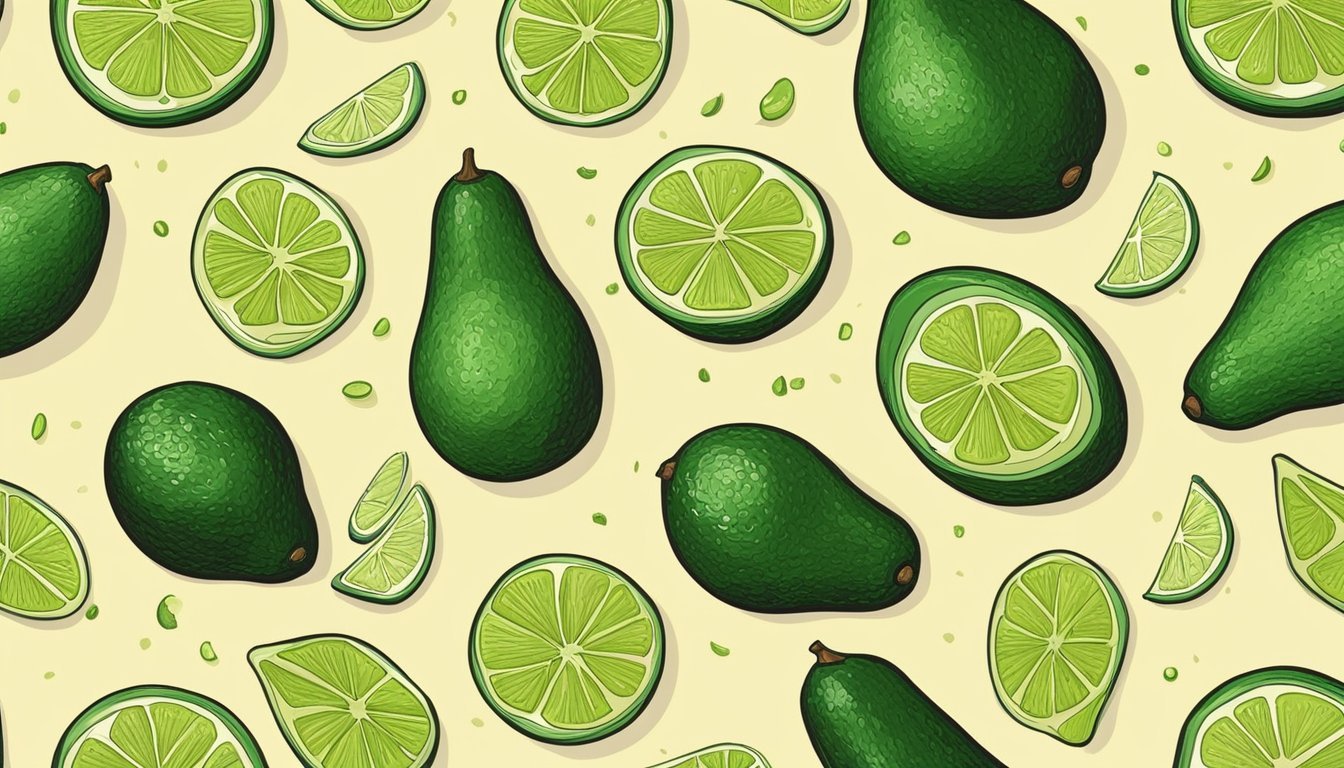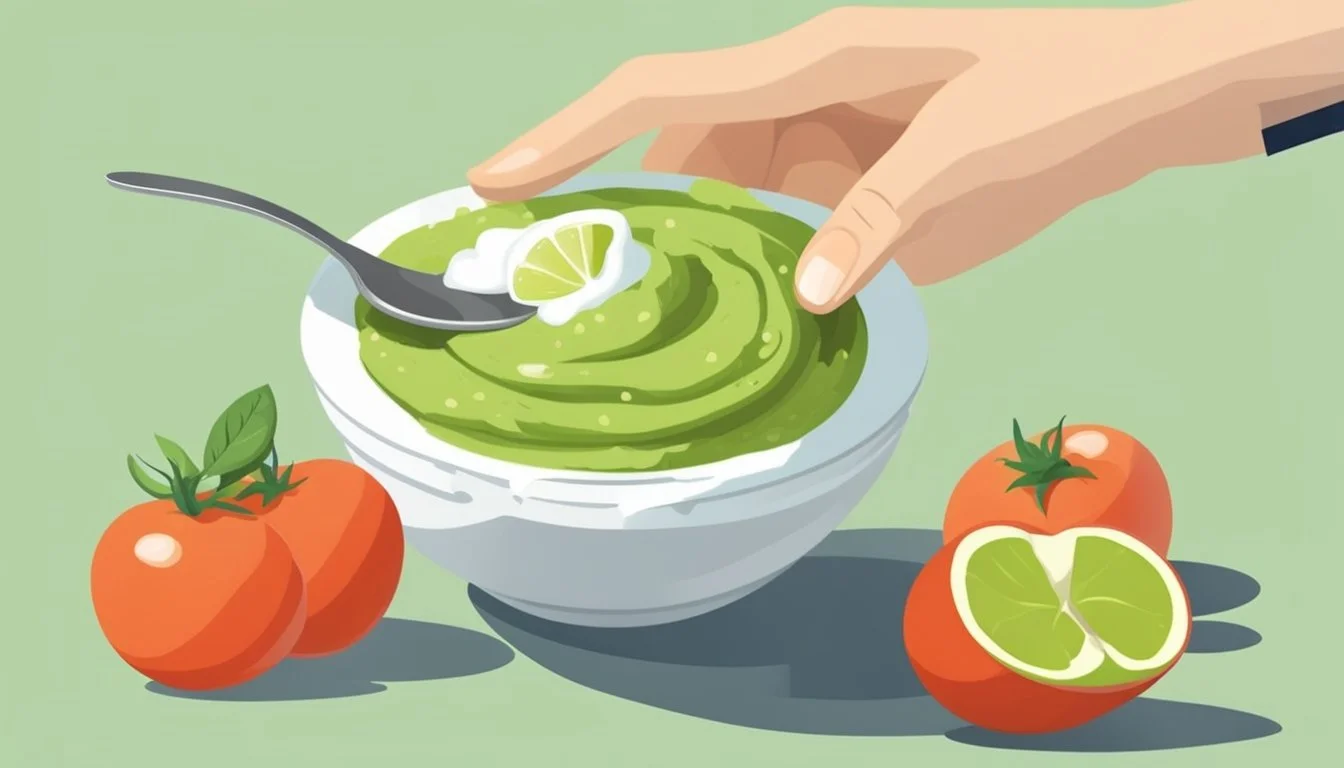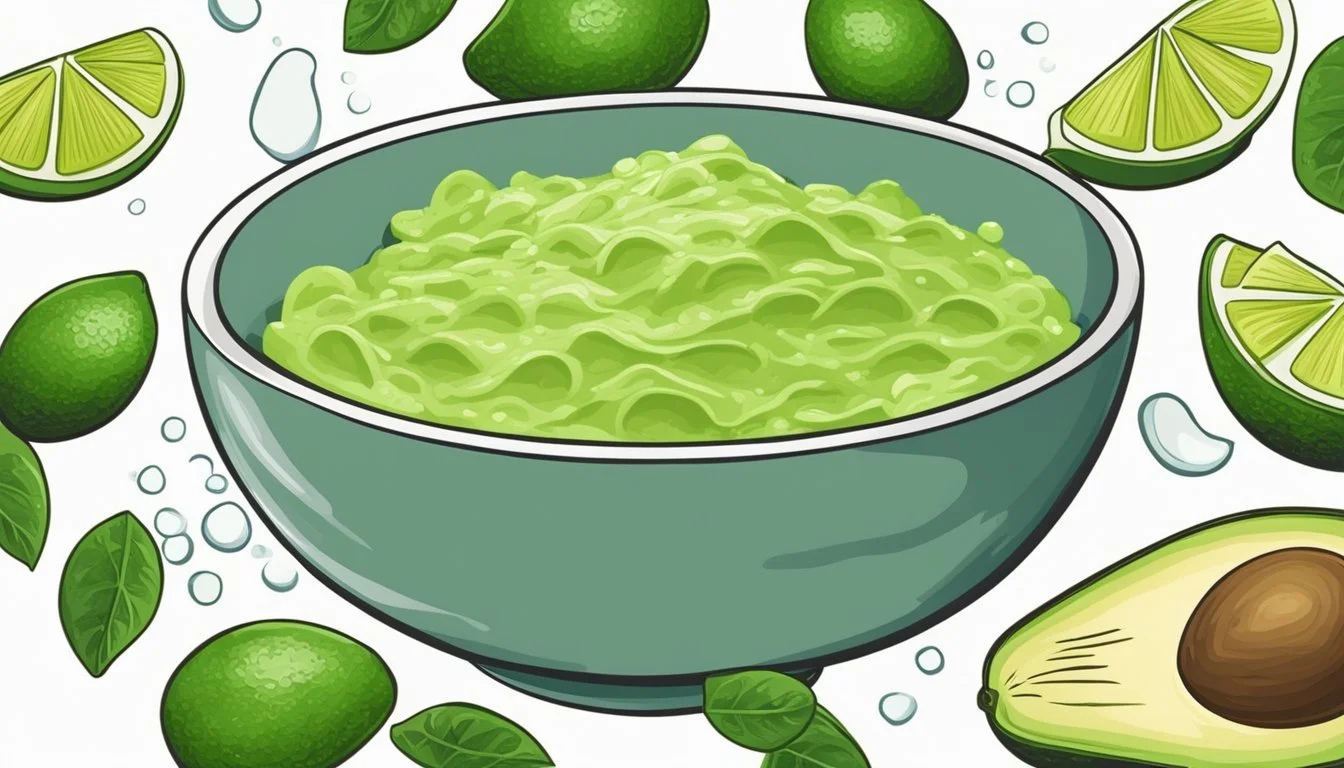Fixing Watery Guacamole
Pro Tips for Achieving the Perfect Consistency
When crafting the perfect guacamole, texture is key. Achieving that ideal consistency can be as important as the flavor itself. However, culinary enthusiasts may occasionally find themselves facing the challenge of watery guacamole. This can occur due to overripe avocados, excessive liquid from ingredients like tomatoes, or even from the natural moisture content of the avocado itself. A watery dip can detract from the overall experience, but fortunately, there are several techniques available to thicken guacamole and restore its desired creamy texture.
The foundation of guacamole's velvety consistency starts with the avocado. Selecting firm, just-ripe avocados is the first step in preventing a runny mixture. In the event that guacamole does turn out too watery, there are various methods to salvage it without compromising taste. Simple fixes include draining excess liquid or incorporating thicker ingredients that can absorb the moisture and add substance.
To maintain the integrity of the dish, thickening agents should be complementary to guacamole's flavor profile. These ingredients must not only absorb extra moisture, but also enhance the taste and contribute to the overall quality of the dip. A mindful approach to correcting the texture will ensure that the guacamole remains a popular and indulgent spread to accompany any meal or gathering.
Understanding Guacamole
Guacamole's consistency and flavor are greatly influenced by the type and condition of avocados used. Ensuring the right balance of ingredients and avocado ripeness can help prevent a watery outcome.
The Role of Avocado Varieties
Various avocado varieties can affect the texture and consistency of guacamole. Hass avocados are commonly favored for their creamy texture and rich flavor, which are ideal for a thick, hearty guacamole. On the other hand, Florida avocados have a higher water content and less fat, which can lead to a more fluid and less flavorful dip. Choosing the right avocado variety is crucial for achieving the desired consistency in guacamole.
Factors Leading to Watery Guacamole
Watery guacamole can result from several factors:
Ripe avocados: Ideally, avocados should be just ripe, meaning they yield to gentle pressure but aren't overly soft. Overripe avocados can be too mushy and lead to a runny texture.
Unripe avocado: Conversely, an unripe avocado may not mash well, creating an undesirable, chunky texture. As it ripens, excess moisture can be released, thinning the guacamole.
Additional Ingredients: Water-based ingredients, such as tomatoes and onions, can release moisture into the guacamole. It's crucial to consider the water content of accompanying ingredients to avoid a watery guacamole.
Using ripe avocados, adjusting ingredient ratios, and carefully selecting avocado varieties are keys to a well-textured guacamole.
Selecting Ingredients
The quality and combination of ingredients are essential for crafting a creamy, well-balanced guacamole. Proper selection can help avoid or correct a watery consistency.
Choosing the Right Avocados
When selecting avocados for guacamole, one should look for Hass avocados, which are renowned for their creamy texture. Avocados should be ripe, imparting both flavor and thickness to the guacamole. To test for ripeness, gently press the skin; it should yield slightly under pressure but not be mushy.
Impact of Additional Ingredients
Integrating additional ingredients impacts not just flavor, but also texture:
Lime vs. Lemon: A squeeze of lime juice offers tanginess while helping prevent browning. Lemon juice can be a suitable alternative, though it has a slightly sweeter note.
Salt: Prefer kosher salt for its clean flavor and ability to meld with other ingredients without overpowering.
Cilantro: Fresh cilantro lends a bright, herbaceous note. Chop finely to distribute evenly.
Onions: Diced red onion adds a burst of sharpness and color, while ensuring a crunchy texture.
Tomato: Seed and dice tomatoes to incorporate flavor without unnecessary moisture.
Peppers: Finely chopped jalapeño or jalapeno pepper introduce a controlled heat; using less seeds reduces spice levels.
Vegetables: Additional vegetables like cucumber can be used sparingly. They should be seeded and finely diced to minimize water content.
One must be mindful to balance these ingredients in a way that complements the avocados' natural richness without diluting the dip's overall consistency.
Preparation Techniques
In creating the perfect guacamole, attention to texture and oxidation is paramount. The preparation methods directly affect the dip's consistency and longevity.
Achieving Desired Texture
The texture of guacamole – whether chunky or creamy – hinges on the method used to mash the avocados. For a chunky texture, one should gently mash the avocado with a fork or a potato masher, ensuring not to over-mash. In contrast, for a creamy consistency, it's advisable to utilize a blender or food processor to achieve a uniform smoothness. However, care must be taken not to process for too long, as the heat generated can alter the flavor.
For Chunky: Fork or potato masher - minimal mashing.
For Creamy: Blender or food processor - watch for overheating.
Preventing Oxidation
Oxidation is the enemy of fresh guacamole, leading to a displeasing brown color. Introducing an acid, such as lemon or lime juice, not only adds flavor but also creates a barrier against oxidation. When storing guacamole, pressing plastic wrap directly onto the surface can minimize air exposure.
Add acid (lemon/lime juice) promptly after mashing.
Store with plastic wrap touching the surface to reduce air contact.
By focusing on these techniques during preparation, one ensures their guacamole remains appealing in both taste and appearance.
Thickening Techniques
In crafting the ideal consistency of guacamole, one may need to employ thickening techniques if the mixture is too watery. These can be approached by either using thickeners or adjusting the existing ingredients in the recipe to achieve a rich and desirable texture.
Using Thickeners
When guacamole turns out too runny, a quick fix is the use of thickeners. However, one should use thickeners sparingly to ensure that the authentic flavor of the guacamole remains intact. Suitable thickeners include:
Cornstarch: Mix a scant teaspoon with a little cold water to create a slurry, then mix into the guacamole while gently heating it on the stovetop.
Arrowroot: Similar to cornstarch, arrowroot can be mixed with cold water and then added to the guacamole.
These methods require minimal heat application just enough to activate the thickening properties without cooking the guacamole.
Adjusting the Ingredients
Another method is to adjust the ingredients within the guacamole recipe itself:
Avocado: The main ingredient, avocado, can naturally thicken the mix. If your guacamole is watery, mashing in an additional avocado can give it a creamier texture.
Dairy Additions: Incorporating dairy products, like sour cream, cream cheese, mayonnaise, or Greek yogurt, not only thickens the guacamole but also adds a tangy flavor.
Incorporating these ingredients should be done to taste, ensuring that the original flavor profile of the guacamole is preserved while enhancing its texture to a creamy and spreadable consistency.
Flavor Enhancement
Proper flavor enhancement is crucial when remedying watery guacamole, as it ensures not only improved texture but also a more balanced and rich taste profile.
Balancing Tartness and Acidity
Watery guacamole may carry an imbalance in tartness and acidity, which can often be corrected by the careful addition of citrus juices. Lime juice and lemon juice are classic choices that provide a refreshing zing. One should use them sparingly; a few drops can significantly alter the flavor balance. If the guacamole is overly acidic, a small amount of sugar can be added to neutralize excess sourness.
Herbs and Seasoning for Taste
Incorporating garlic is a tried-and-true way to deepen the flavor of guacamole. Garlic should be used judiciously; freshly minced cloves or garlic paste will distribute more evenly than garlic powder. A well-made salsa can also serve as a taste enhancer, adding both spice and depth. The seasoning of the guacamole should be carefully adjusted, combining salt and a variety of herbs, such as cilantro, to complement the existing flavors and round out the dip.
Serving and Pairing
A well-prepared guacamole serves not only as an outstanding appetizer but also as an adaptable complement to a variety of Tex-Mex staples. Emphasizing the right pairings can elevate the dining experience, creating memorable flavors and textures.
Best Foods to Accompany Guacamole
Guacamole shines as a dip and is traditionally served with tortilla chips, their crispness and salty taste making an ideal match. It also pairs excellently with:
Nachos: Layered with melted cheese, beans, and guacamole, they offer a hearty snack or meal component.
Tacos: A dollop of guacamole adds creaminess and richness to tacos, balancing out spices and meats.
Fajitas: The smooth texture of guacamole contrasts nicely with the sizzle of fajitas, enhancing their flavor.
Enchiladas: Guacamole serves as a cool, refreshing counterpoint to the warm spice of enchiladas.
Bold flavors and textures are key; guacamole can highlight the freshness in these dishes and enhance the overall taste experience.
Innovative Ways to Serve
Guacamole need not be confined to a bowl with chips. For those looking to present this acclaimed dip in a unique fashion:
Use it as a filling in deviled eggs, replacing traditional mayo-based fillings.
Offer guacamole-topped potato skins as a rich and satisfying option.
As a gourmet appetizer, spoon individual servings of guacamole onto shrimp cocktail. (What wine goes well with shrimp cocktail?)
By presenting guacamole in unexpected ways, it maintains its role as a vibrant and fresh complement to a variety of dishes, while also standing out as a star attraction in its own right.
Storage and Shelf Life
When it comes to guacamole, understanding its storage and shelf life is paramount for maintaining both safety and quality. A well-stored guacamole can last between 3-4 days in the refrigerator, and certain techniques can help in preserving its freshness.
Proper Storage Methods
To ensure that guacamole retains its quality, it is crucial to store it in the refrigerator immediately after preparation or purchase. The recommended storage temperature to hinder bacterial growth and preserve the dip’s integrity is between 35-40°F (2-4°C). Homemade guacamole typically lasts for 3-4 days when refrigerated. For those looking to make guacamole ahead of time, it's vital to use ripe avocados and an airtight container to minimize exposure to ethylene gas, which accelerates ripening and spoilage.
Maximizing Freshness
Guacamole's freshness hinges upon reducing oxidization. To achieve this, one should:
Press plastic wrap directly onto the surface of the guacamole to create a barrier against air.
Add lime or lemon juice for acidity, which can naturally prolong its shelf life.
Keep the pit inside the guacamole if storing a partially used portion, as this may help reduce browning.
By adhering to these storage tips and maintaining awareness of guacamole’s shelf life, one can extend the enjoyment of this versatile dip.
Nutritional Information
As an integral part of a balanced diet, guacamole's nutritional profile benefits from its main ingredient, the avocado, which contributes healthy fats and a variety of vitamins and minerals. The following subsections explore the specific health advantages and nutritional breakdown of guacamole.
Health Benefits of Guacamole
Guacamole comprises primarily avocados, which are high in monounsaturated fats. These fats are beneficial for heart health and can help lower bad cholesterol when consumed in moderation. The dip also offers a good fiber content, which aids in digestion and can contribute to a feeling of fullness, assisting with appetite regulation. Guacamole is rich in vitamins C and E, antioxidants that promote immune function and skin health. Other essential nutrients present in significant amounts include potassium, which helps in managing blood pressure levels, and vitamin K, critical for bone health.
Understanding the Calories and Macros
Examining the macronutrient content of guacamole gives a clearer picture of its caloric and nutritional density. Below is a tabulated breakdown of the average content in a standard serving size of homemade guacamole, approximately 2 tablespoons (30 grams):
Nutrient Amount per serving Calories 50 Fat 4.5g Saturated Fat 0.7g Carbohydrates 2.5g Fiber 2g Protein 1g Sodium 4mg Potassium 150mg Vitamin A 2% of RDI Vitamin C 4% of RDI Calcium 1% of RDI Iron 2% of RDI
*RDI - Recommended Daily Intake
It should be noted that the exact values can vary based on additional ingredients such as onions, tomatoes, and seasonings. However, the noted quantities provide a general idea of guacamole's caloric and macronutrient content, showing it as a nutrient-dense food choice that can fit within a healthy diet when consumed in appropriate portions.
Variations and Customizations
Exploring regional differences and creative add-ins allows one to enhance and customize their guacamole experience while still maintaining the integrity of the classic dish.
Regional Guacamole Variations
Different regions offer their own twist on traditional guacamole. In Mexico, the birthplace of guacamole, the authentic recipe is a simple mix of ripe avocados, lime juice, cilantro, and onions, with jalapenos for a kick of heat. This classic Mexican recipe may also include diced tomatoes, similar to pico de gallo, creating a richer texture and flavor profile.
Mexican Traditional Guacamole:
Avocados
Lime juice
Cilantro
Onions
Optional: Jalapenos, Diced tomatoes (pico de gallo)
Other regional variants may incorporate local ingredients such as:
Southern Californian: Adds mangoes for a sweet twist.
Coastal: Seafood (like lump crab meat) is mixed in for a seaside infusion.
Creative Add-Ins
For those looking to push the envelope beyond the traditional guacamole recipe, there is a spectrum of creative add-ins. Customizing your guacamole can vary from simply mixing in extra spices to incorporating other dip elements, like hummus, for a creamy, Middle Eastern-inspired blend.
Savory Add-Ins:
Roasted garlic for deeper flavor
Pepitas (pumpkin seeds) for a crunchy texture
Crispy bacon bits for indulgence
Unconventional Mix-ins:
Chopped kale for a nutrient-dense variant
Greek yogurt for creaminess with less sourness than hummus
Sun-dried tomatoes for a tangy, sweet note
Adding these ingredients should be done thoughtfully to not overwhelm the delicate balance of the classic guacamole. It's important to taste as you go and adjust seasoning accordingly.
Troubleshooting Common Issues
In this section, the reader will learn how to rectify watery guacamole and enhance its consistency and flavor through specific adjustments and techniques.
Fixing Common Mistakes
Watery guacamole often results from excessive citrus juice or the use of underripe avocados. A simple solution is to add more ripe avocados to the mixture, as ripe avocados have less water content and can balance out the consistency. To address salty aftertaste, the chef can introduce a finely diced tomato or onion which can absorb some of the salt while also adding texture and flavor.
Improving Consistency and Flavor
For enhancing both consistency and flavor, the following points should be considered:
Ripeness: Ensure avocados are at the peak of ripeness for optimal creaminess.
Citrus Juice: Use citrus juice sparingly to prevent a watery texture and a too-tart aftertaste; add incrementally and taste as you go.
Ingredients:
To rescue a too-tart guacamole, introduce a pinch of sugar.
For watery guacamole, consider incorporating thickening agents like mashed avocado to achieve the desired thickness without altering taste significantly.
By following these targeted approaches, one can not only fix common guacamole issues but also elevate the overall quality of their dips and spreads.
Celebration and Culture
When it comes to guacamole, its role in traditional celebrations and cultural significance are as rich and varied as the flavors of this beloved dip.
Guacamole in Traditional Celebrations
Cinco de Mayo: Regarded by many as a time to indulge in Mexican fare, Cinco de Mayo sees guacamole grace many tables, often as a classic Mexican recipe that complements an array of festive foods like tacos and burritos. Originally commemorating the Mexican army's 1862 victory over France, in the United States, the day has transformed into a broader celebration of Mexican-American culture, where guacamole is a staple.
Game Day: A towering presence at many game day spreads, guacamole is a fan favorite for its versatility and ease of sharing. Its appearance in numerous cookbooks and online recipe hubs has cemented its place as a must-have for any sports celebration, pairing perfectly with crispy tortilla chips and cold beverages.
The Cultural Significance of Guacamole
Guacamole isn't just a dip; it's a cultural icon synonymous with Mexican cuisine. It transcends being a simple condiment, embodying the essence of Mexican hospitality and culinary creativity. The dip's core ingredient, the avocado, has roots in ancient Mexican cuisine and remains a fundamental part of modern Central American culture. The concept of "classic guacamole" is deeply ingrained within traditional Mexican recipes, and its preparation is often a familial ritual passed down through generations.










